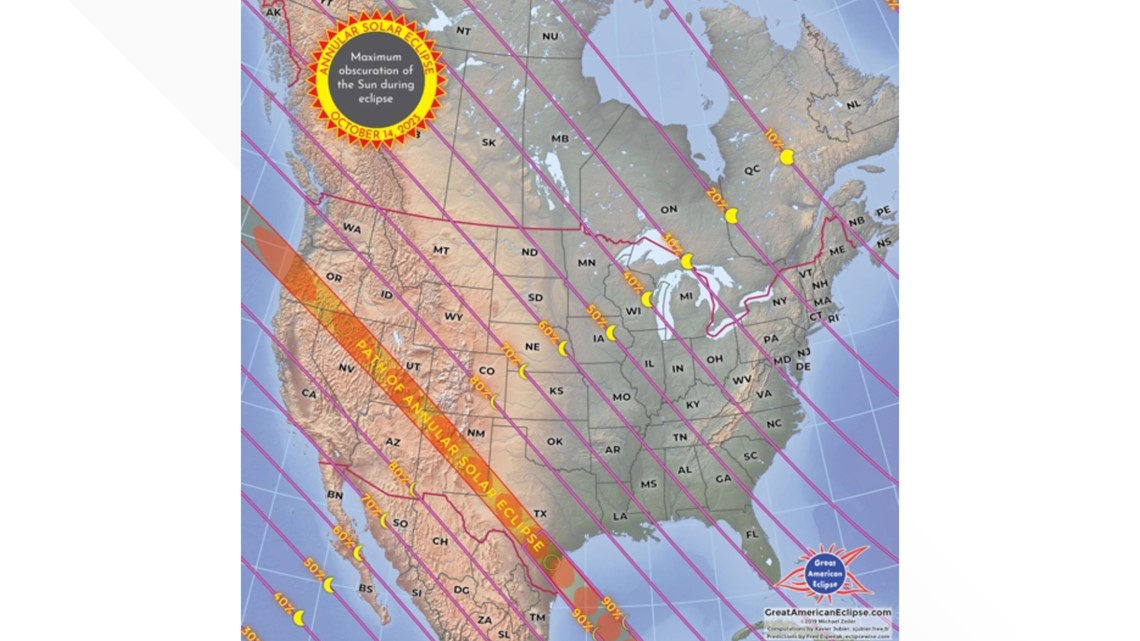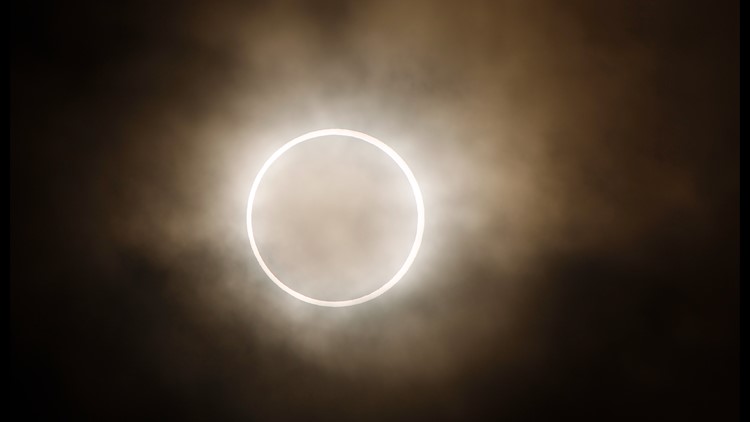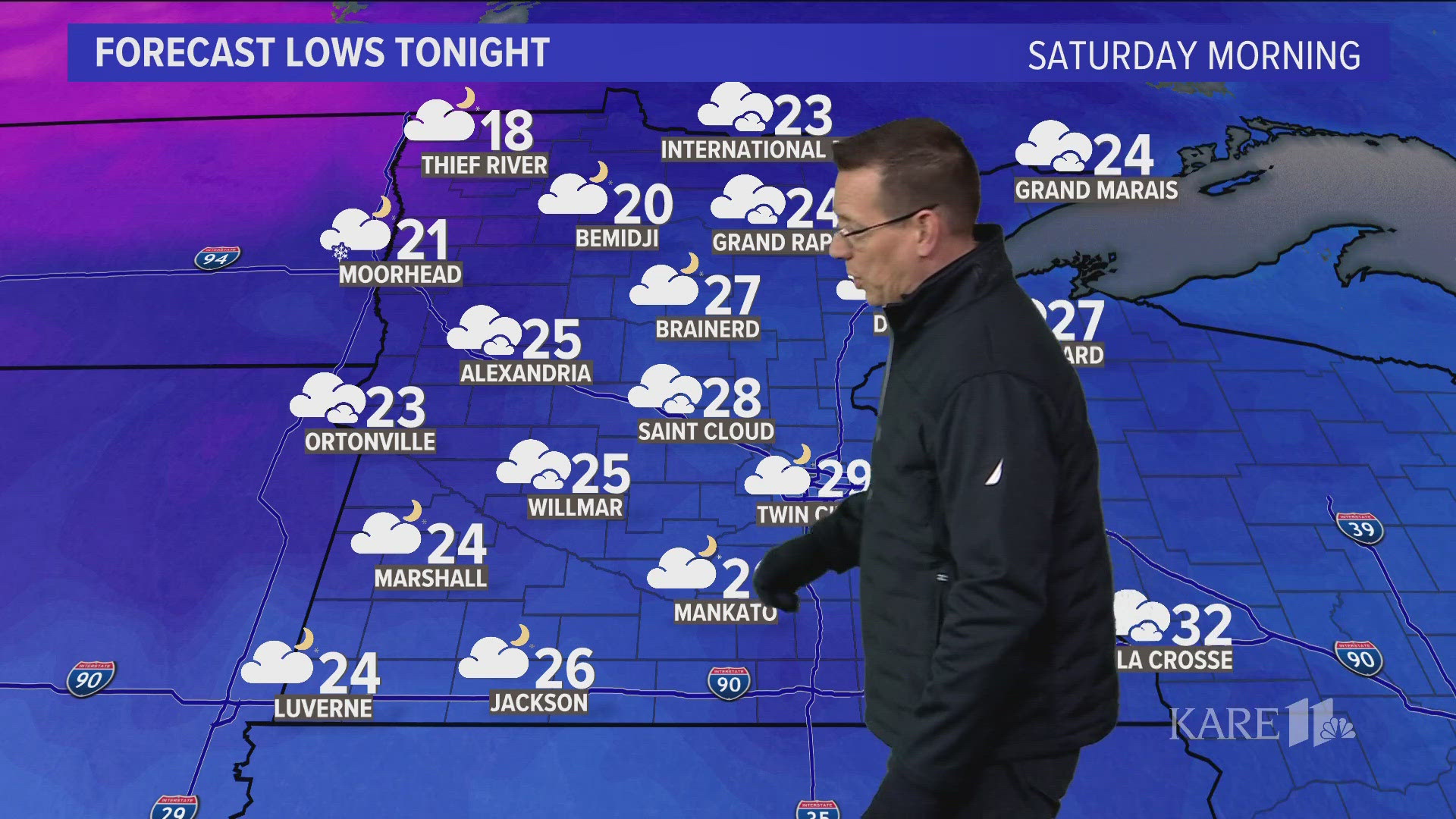MINNEAPOLIS — This weekend, millions of Americans will find themselves in the path of the "ring of fire" solar eclipse.
Also known as an annular eclipse, the ring of fire phenomenon happens when the moon passes between the sun and the Earth, but when it's at or near its farthest point from Earth, according to NASA.
When this happens, the moon appears smaller and doesn't completely cover the sun. The dark circle (the moon) in front of the sun creates the illusion of a glowing ring around the moon.
When is the eclipse happening?
The annular eclipse is forecast to cross over North, Central and South America on Saturday, Oct. 14. It'll begin in Oregon at 9:13 a.m. PDT and ends in Texas at 12:03 p.m. CDT.
Areas in the direct path of the eclipse will experience the "ring of fire," but all 48 contiguous U.S. states, including parts of Alaska, will experience at least a partial solar eclipse.
The eclipse will next pass over Guatemala, Belize, Honduras, Nicaragua, and Panama, before crossing into South America in Colombia. It'll then pass over Northern Brazil before ending in the Atlantic Ocean.


When can we see the partial eclipse in Minnesota?
Much of Minnesota and Wisconsin are in the 50% obscuration range during the eclipse. However, due to forecasted weather conditions, it's unlikely the eclipse will be visible.
According to KARE 11 Sunrise meteorologist John Zeigler, cloudy and rainy conditions Saturday morning will obscure any visibility. Rain is expected to dissipate Saturday morning, but a few lingering showers are possible.
So if we won't see it in Minnesota, how can we watch the eclipse?
NASA experts will host a live broadcast of the annular solar eclipse from Kerrville, Texas and Albuquerque, New Mexico.
The stream runs from 11:30 a.m. ET to 1:15 p.m. ET.
When will the annular eclipse happen again?
Not for a very, very long time.
An annular solar eclipse won't be visible from the U.S. until June 2039. According to NASA, the only state in the path for that eclipse is Alaska.
The agency says the next total solar eclipse will happen on April 8, 2024, and will cross the U.S. from Texas to Maine. During this event, a partial solar eclipse will be visible throughout the contiguous U.S., Puerto Rico and parts of Alaska and Hawaii.
Watch more WeatherMinds:
Watch the latest deep-dives and explainers on weather and science in our YouTube playlist:
WATCH MORE ON KARE 11+
Download the free KARE 11+ app for Roku, Fire TV, Apple TV and other smart TV platforms to watch more from KARE 11 anytime! The KARE 11+ app includes live streams of all of KARE 11's newscasts. You'll also find on-demand replays of newscasts; the latest from KARE 11 Investigates, Breaking the News and the Land of 10,000 Stories; exclusive programs like Verify and HeartThreads; and Minnesota sports talk from our partners at Locked On Minnesota.
- Add KARE 11+ on Roku here or by searching for KARE 11 in the Roku Channel Store.
- Add KARE 11+ on Fire TV here or by searching for KARE 11 in the Amazon App Store.
- Learn more about the KARE 11+ app for Apple TV in the Apple App Store.
- Learn more about KARE 11+ here.



